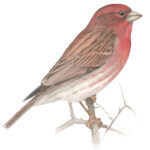Air travel with a baby can bring up a lot of questions for parents, especially when it comes to safety. You might be wondering, “When Is It Safe To Fly With A Baby?” The good news is that for healthy, full-term infants, flying is generally safe after they are a few weeks old. However, there are important considerations to ensure your baby’s well-being during air travel.
Baby’s Age and Health: Key Factors to Consider
While air travel is typically safe for older babies, newborns and infants with certain health conditions require extra attention.
Recommended Age to Fly
Experts generally advise against flying with a newborn within the first 7 days of life. Some healthcare professionals even extend this recommendation to the first few months. This is primarily because newborns need time to adjust to life outside the womb, and their immune systems are still developing.
For premature babies, it’s especially crucial to consult with a pediatrician before flying. Premature infants may have underdeveloped lungs that could be sensitive to cabin pressure and altitude changes.
Health of the Baby
Regardless of age, a baby’s overall health is paramount. If your infant has any heart or lung problems, it’s essential to get clearance from a healthcare professional before planning air travel. Even for healthy babies, it’s wise to consider their susceptibility to germs, especially in crowded environments like airports and airplanes. A baby’s immune system is still immature, making them potentially more vulnerable to infections.
Essential Tips for Safe and Comfortable Baby Air Travel
Beyond age and health, several practical steps can contribute to a safer and more comfortable flying experience for your baby.
Caregiver Health and Preparation
Remember that your well-being as a caregiver is also crucial. Flying with a baby can be tiring and stressful. Prioritize your own health by getting enough rest before the flight and practicing good hygiene, such as frequent handwashing, to minimize exposure to germs for both you and your baby. Being informed about any illnesses prevalent in your departure and arrival locations can also help you take necessary precautions.
Addressing Baby’s Ear Discomfort During Flights
Changes in cabin pressure during takeoff and landing can cause ear discomfort for babies. A simple yet effective way to alleviate this is by encouraging your baby to suck during these critical times. Breastfeeding, bottle-feeding, or offering a pacifier can all help equalize pressure in their ears. Timing feedings to coincide with takeoff and landing can be a helpful strategy.
If your baby has recently had ear surgery or has an ear infection, consult with your pediatrician to determine when it’s safe for them to fly. Additionally, airplane cabin noise, especially during takeoff, can be quite loud. Consider using cotton balls, noise-canceling headphones, or small earplugs to protect your baby’s ears and help them sleep more comfortably.
Ensuring Baby’s Safety on the Plane
While airlines often permit infants to sit on a caregiver’s lap, the Federal Aviation Administration (FAA) strongly recommends using certified car seats for infants during flights. Most infant car seats are approved for air travel. If you prefer to use a car seat but haven’t purchased a separate ticket for your baby, inquire about seat availability when boarding. An unoccupied seat might be available for your baby’s car seat.
It’s important to avoid giving your baby any medication, like diphenhydramine (Benadryl), to make them sleep during the flight. This practice is not recommended and can have unpredictable and even opposite effects in infants.
Conclusion: Fly Safe and Smart with Your Baby
In summary, flying with a baby is generally safe, particularly for healthy, full-term infants beyond the first few weeks of life. However, careful planning and consideration of your baby’s age, health, and comfort are essential. By consulting with your pediatrician, taking necessary health precautions, and implementing practical tips for in-flight comfort and safety, you can ensure a smoother and safer air travel experience for both you and your baby.
